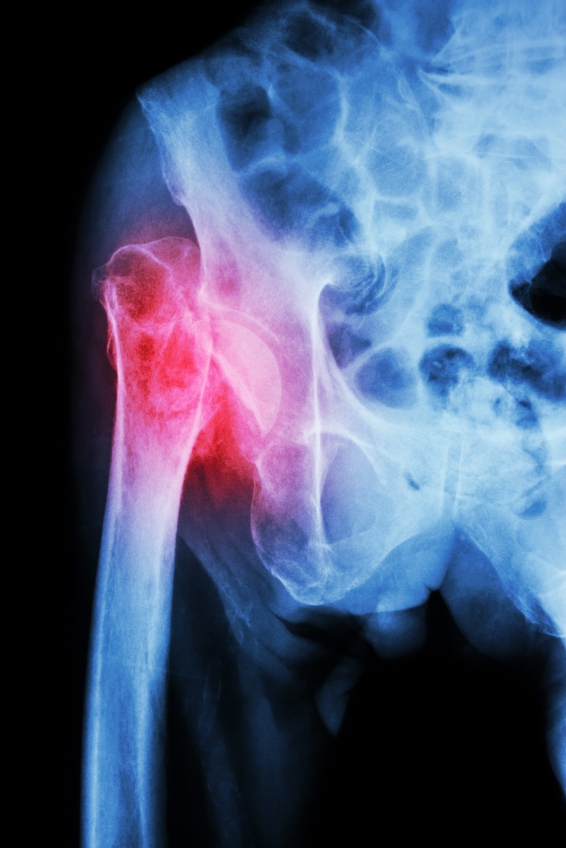The hips are important for basic functions like walking. If you find that your hips are bothering you more than they should, you might want to know about their anatomy. The important structures to be considered when talking about the hip are the bones and joints, the ligaments and tendons, the muscles, the nerves, the blood vessels, and the bursae, which are fluid filled sacs that help reduce the friction between moving tissues. The joint is the articulation of the pelvis and the femur; the hip is a ball and socket joint that provides stability, thought to be mainly due to the pelvis, or acetabulum. The ‘ball’ is the end of the femur, and its rounded end fits in the concave depression of the pelvis. The strong joint capsule is surrounded by muscles and ligaments that add to this stability. Due to this configuration, activities like walking and running are possible with a wide amount of motion.
Common Injuries and Diseases
The cartilage on the surface of the ball and socket (articulate cartilage), helps to prevent friction between both the pelvis and the femoral head, but sometimes this cartilage might wear down and cause extreme pain. There is another cartilage at the edge of the socket called the labrum, which can be torn and lead to arthritis. Repair of these tears may be possible via key hole surgery, (arthroscopy), hence delaying the onset of arthritis. This procedure is also offered by our surgeon. Labral tears may be a symptomatic but may present with pain in the groin r buttock, a limp and a feeling that the hip may give away. If you have any of these symptoms, seek review by our Orthopaedic surgeon. If arthritis has occurred or other diseases prohibiting the hip from working at its best, Hip replacement surgery is a common solution to solve the pain and possible mobility issues. Here at Joint Replacement Surgery, a variety of solutions to treat your arthritis can be offered.
Fractured Neck of the Femur
In older people these fractures often result from falls, and women are more susceptible to them due to the increased risk of osteoporosis after menopause. In people under 40 years old, these injuries usually occur due to high energy collisions. Hence often there are other associated injuries. In these high energy injuries the acetablum (socket) can be fractured and the ball may become dislocated from the socket.
Dislocation of the Femoral Head
The femoral head can be dislocated in two ways: it can be acquired or congenital. An acquired dislocation is not common, but it can happen in traumatic accidents. The femoral head is forced backwards, tearing through the weaker parts of the joint capsule. The limb usually rotates to the side, and the femoral arteries are torn, which disrupts the blood supply. There is a risk of the tissue in the femoral head dying (necrosis), due to lack of blood supply. The sciatic nerve, a major nerve running behind the hip can be damaged in these injuries, as it runs close to the hip joint. As the hip dislocates, fractures of the hip socket can occur. Congenital dislocations may present at birth. What happens is the femoral head isn’t located inside the pelvis and it results in a shorter limb, which will predispose the patients to having arthritis when they’re older. This condition is usually checked for at birth but can occasionally be missed. If you notice your child has a shortened limb or walks with a limp, seek medical advice.
Osteoarthritis
This illness is very common in both men and women, usually developing in the late 40s. It is characterised by radiated pain: deep pain in the groin area, which follows at the side and front of the side, in the buttock or down the knee. In severe cases, the bone collapses and the affected leg looks shorter than the other leg. When the joints become worn down, joint replacement surgery is advised. Here at Joint Replacement Surgery we care about your wellbeing, and if you find that your hips are acting up, contact us on 07943 947 639 and we’ll book you in for a 30 minute appointment to speak with our specialist, Miss Samantha Z. Tross. You can also find us on Facebook and Twitter to keep up to date with our news.





